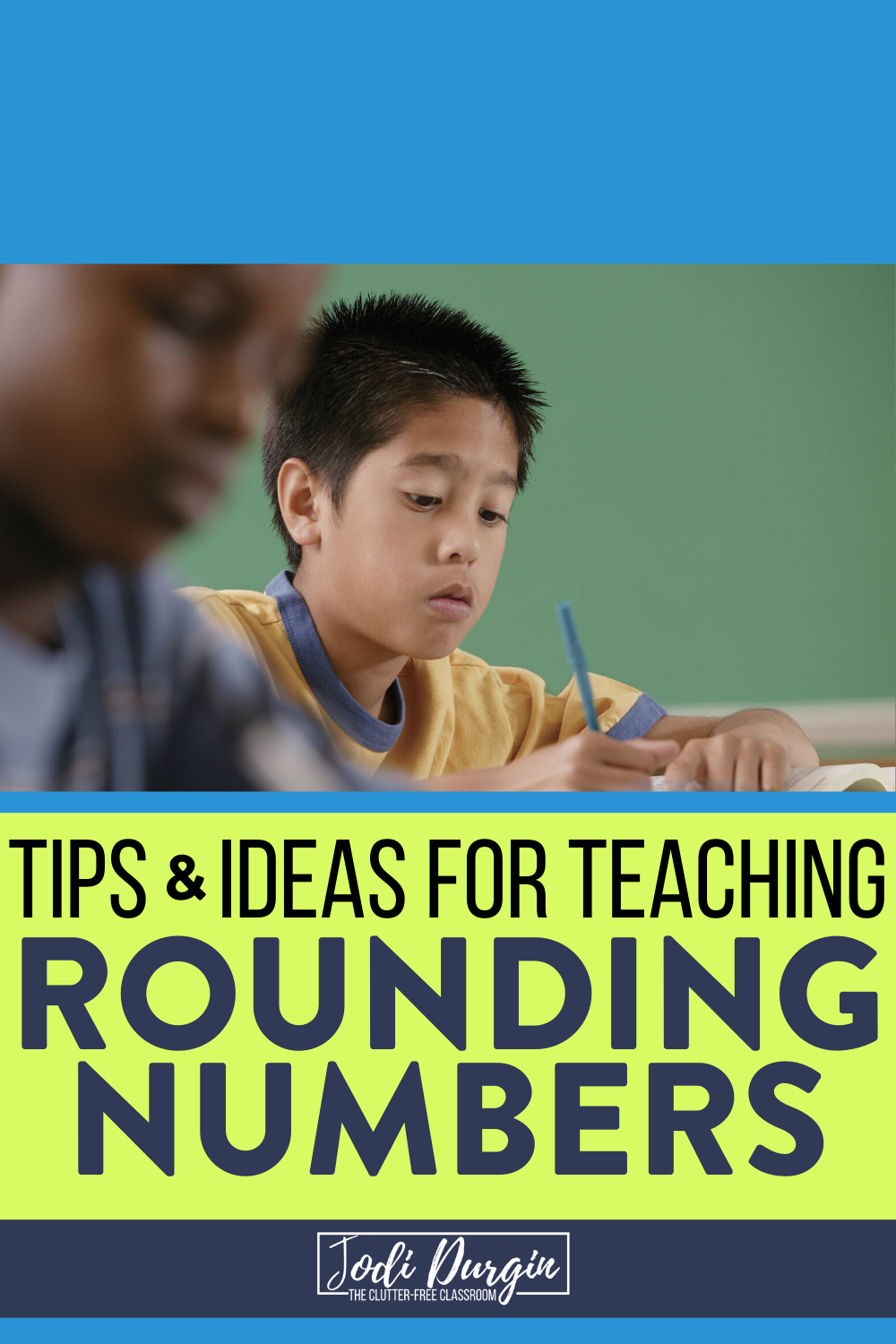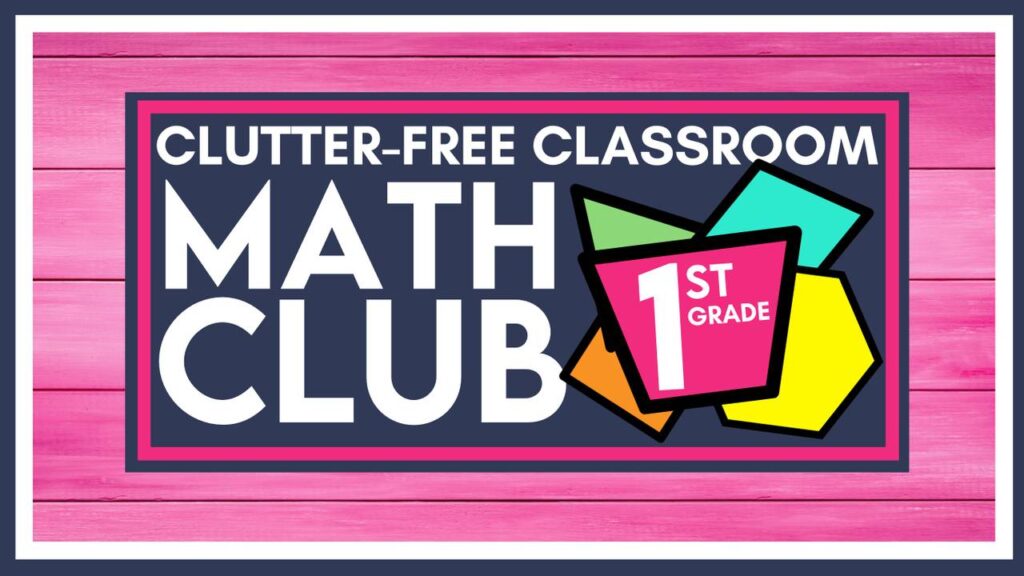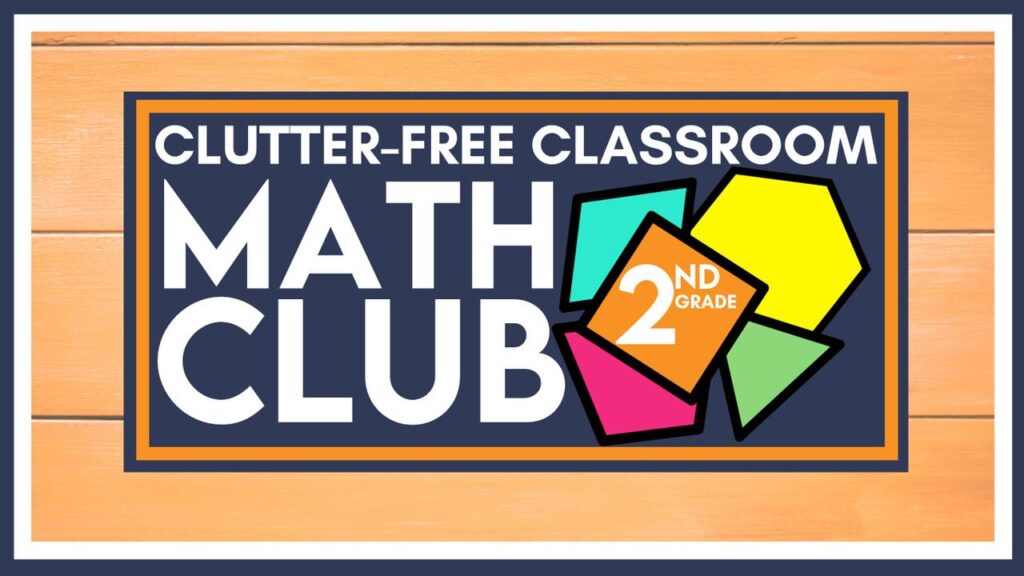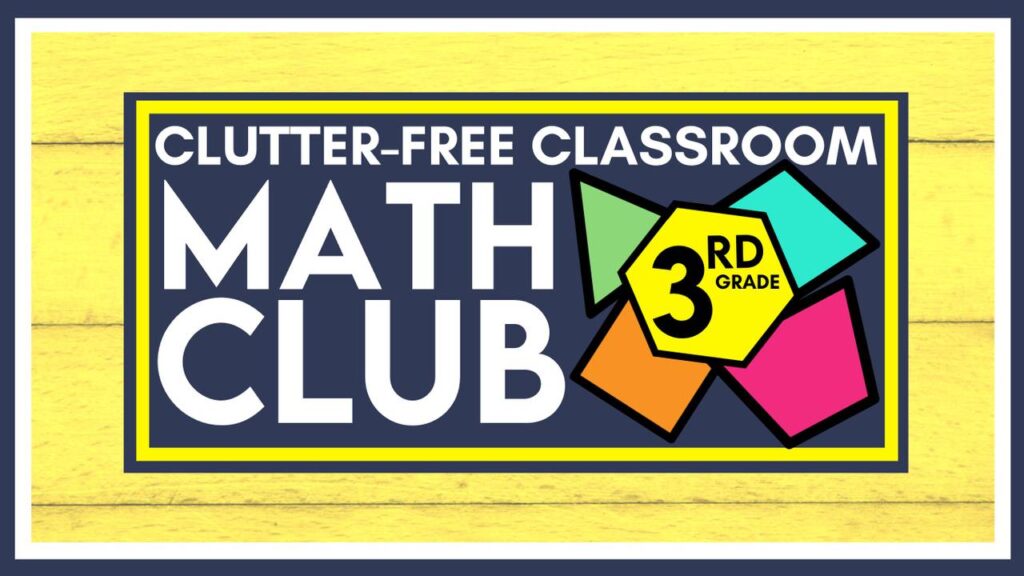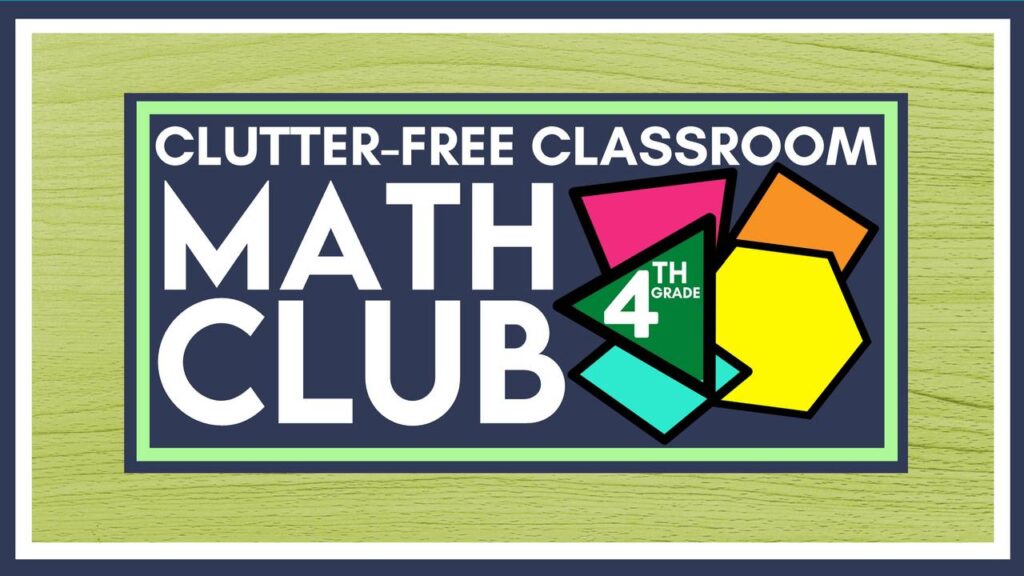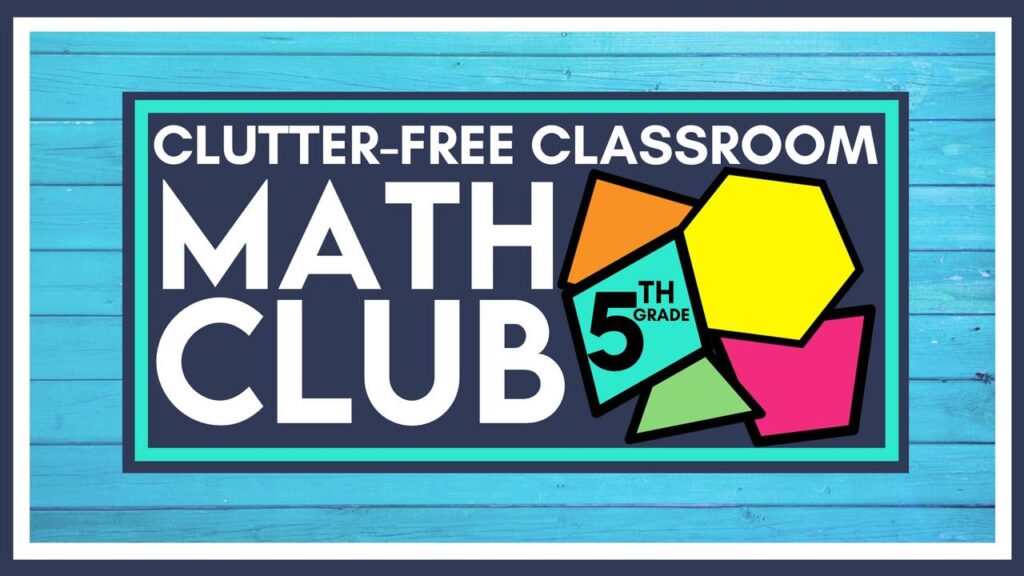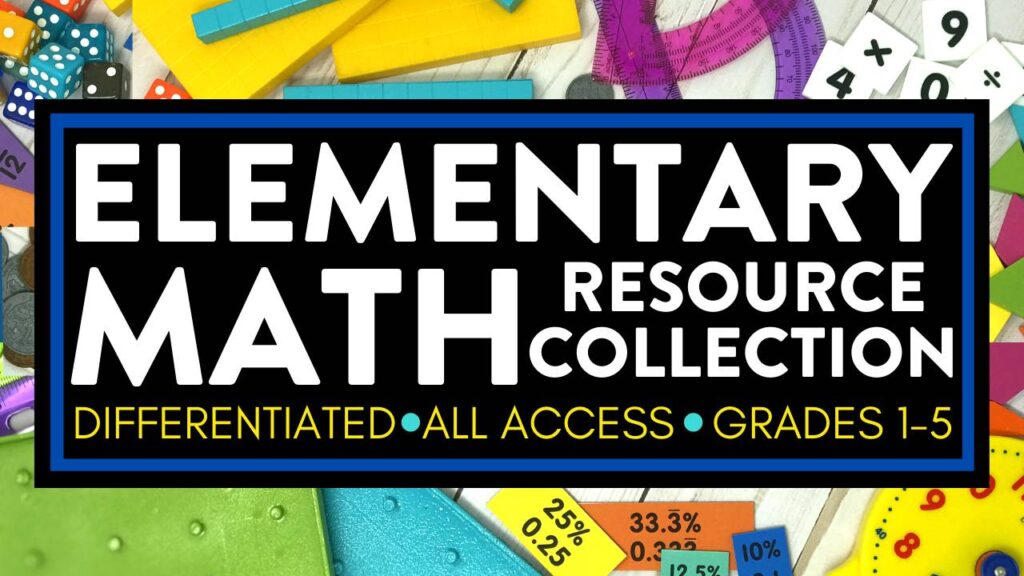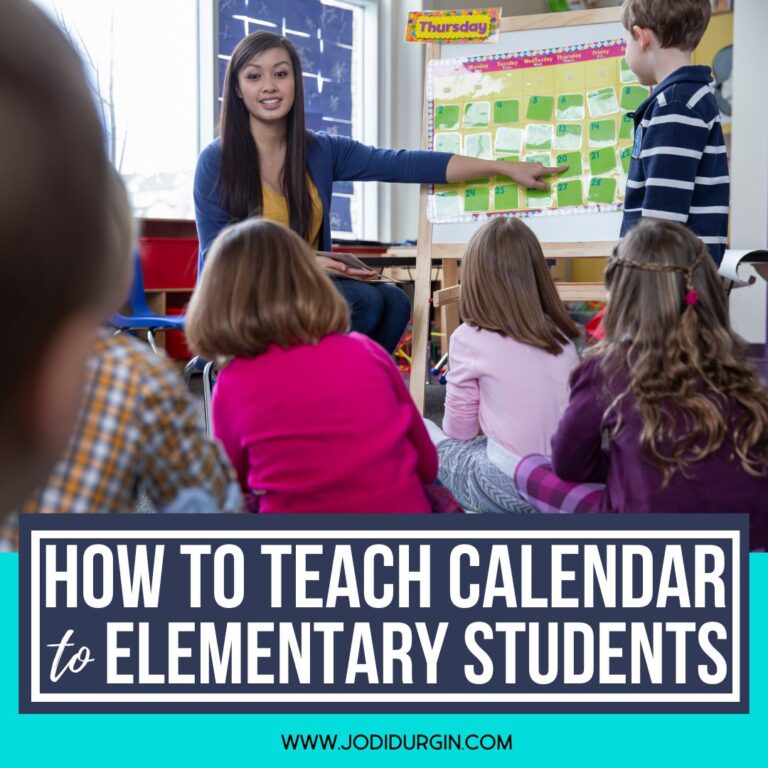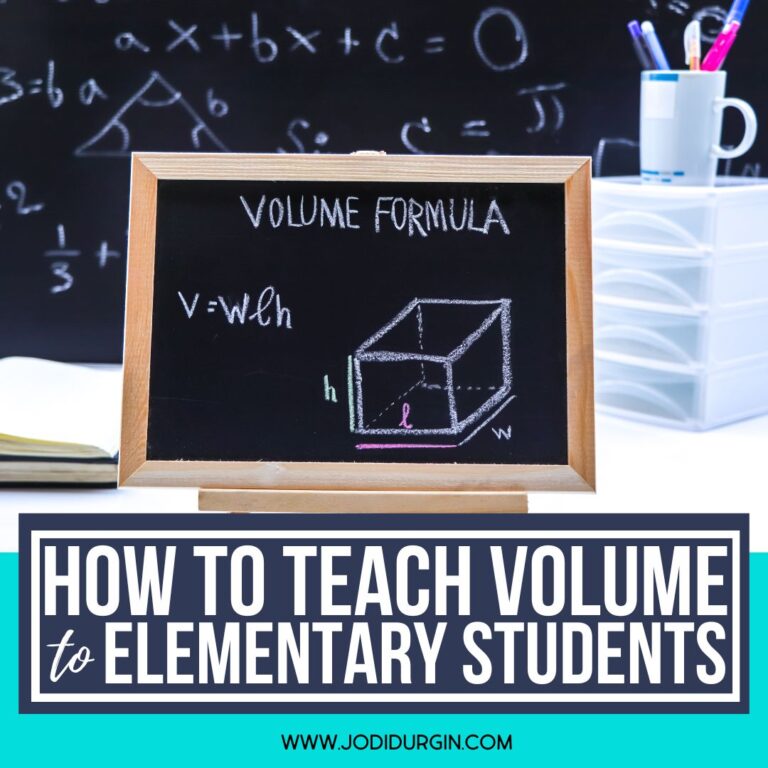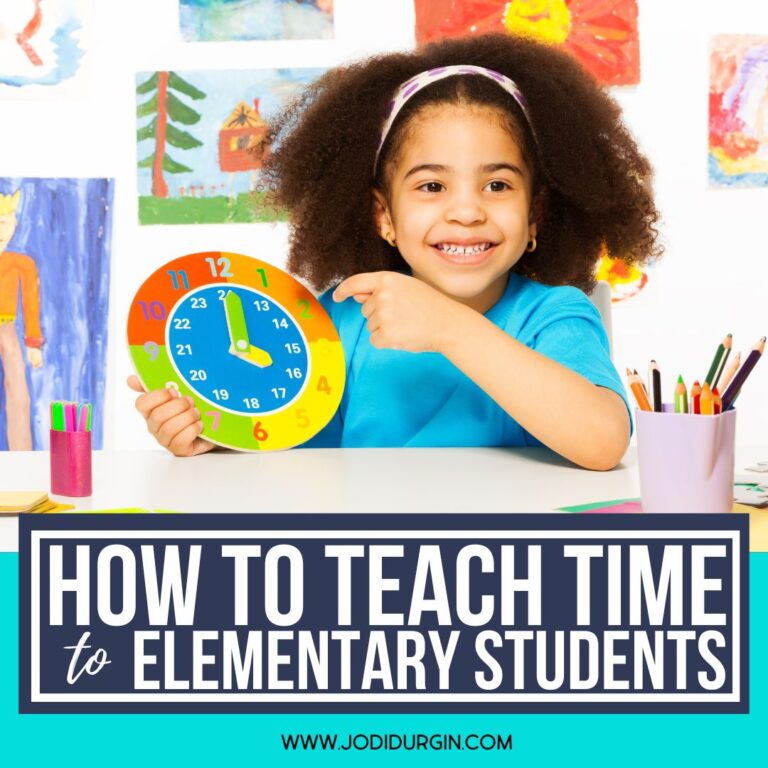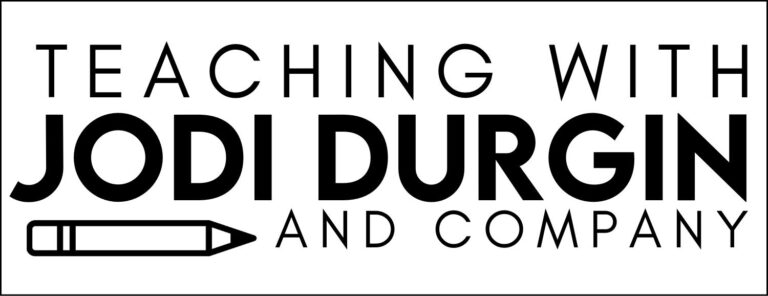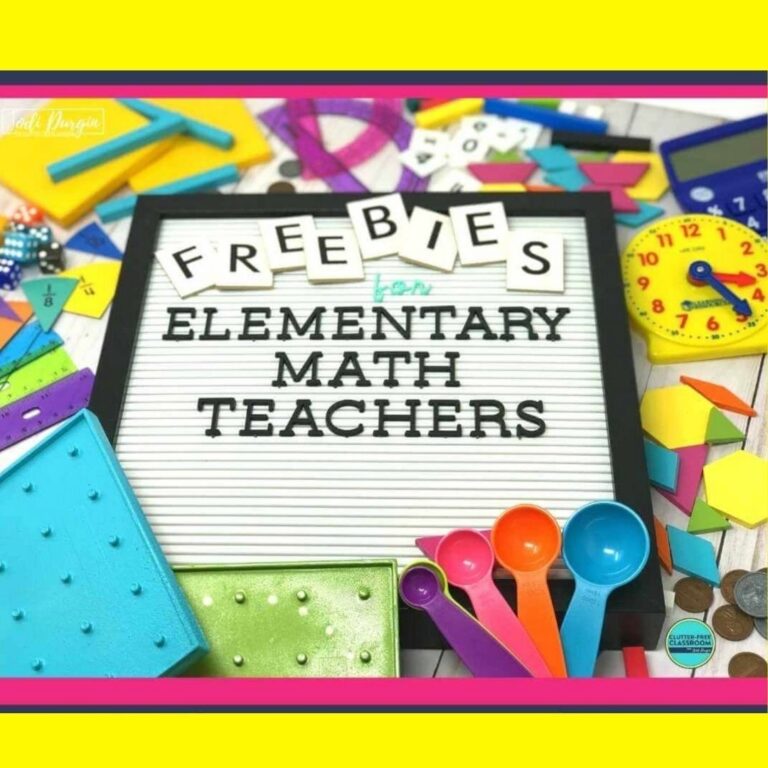If you are an elementary teacher looking for tips and ideas for how to teach rounding, then you found the right place! Learn what rounding is, why it’s important, what your students need to know, and get 5 helpful tips for teaching it in a fun and engaging way. Read all about how to teach rounding numbers below!
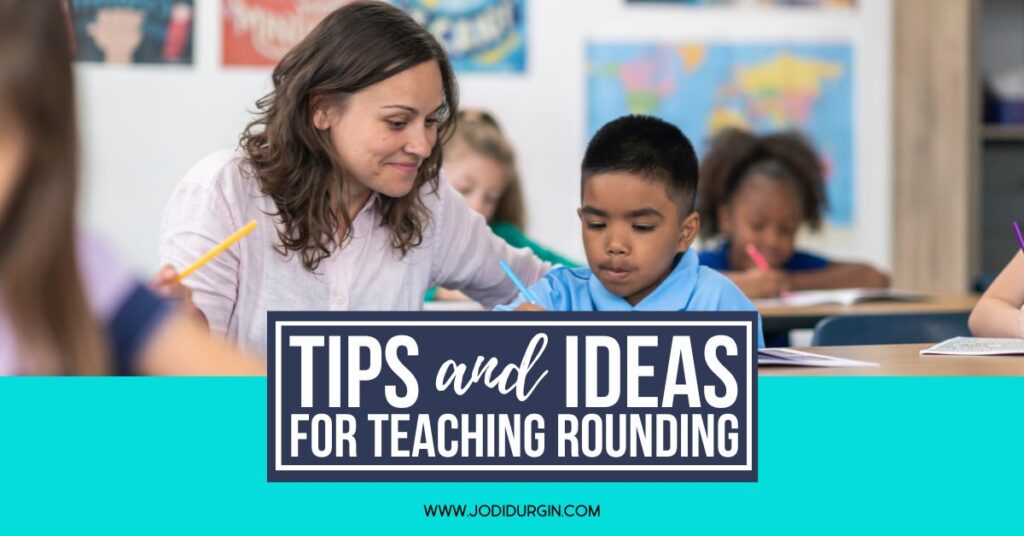
What is Rounding?
Rounding is an essential part of place value understanding. It is a way of simplifying a number so that it is easier to work with. The new value should be close to the original value. Rounding can be used in mathematical situations where it is appropriate to estimate.
Why is Rounding Important?
It is important for students to learn rounding because rounding is a skill that everyone uses daily. We round numbers when a “close” number is good enough. It makes the numbers easier to work with. In addition, with a quick rounding of numbers, students can see that their actual sum, difference, product or quotient is reasonable or not.
What Rounding Skills Do Students Need to Know?
Below are the Common Core and TEKs standards that relate to rounding that define what students should be able to do by the end of the school year.
Common Core Standards
Below are the Common Core Standards related to how to teach rounding.
3rd Grade
- Use place value understanding to round whole numbers to the nearest 10 or 100. (3.NBT.A.1)
4th Grade
- Use place value understanding to round multi-digit whole numbers to any place. (4.NBT.A.3)
TEKS
Below are the TEKS related to how to teach rounding.
3rd Grade
- Represent a number on a number line as being between two consecutive multiples of 10; 100; 1,000; or 10,000 and use words to describe relative size of numbers in order to round whole numbers; (3.2C)
- Round to the nearest 10 or 100 or use compatible numbers to estimate solutions to addition and subtraction problems; (3.4B)
4th Grade
- Round whole numbers to a given place value through the hundred thousands place; (4.2.D)
- Round to the nearest 10, 100, or 1,000 or use compatible numbers to estimate solutions involving whole numbers. (4.4.G)
5 Tips for How to Teach Rounding
Below are 5 helpful tips for how to teach rounding numbers to elementary students.
1. Read Aloud Picture Books that Teach Rounding
Reading aloud picture books is a great way to integrate literacy into your math block and present information in a different way. Our favorite picture books for teaching rounding are Coyotes All Around by Stuart J. Murphy, Fuzzballs!: A Rounding Adventure by KA Long and Rounding Rescue by Eric LoStorto. Check out the full list of math picture books we recommend!
2. Offer Hands On Learning Experiences
Hands-on math experiences help students make connections, remember their learning, and develop a deep conceptual understanding of the content. You can make any lesson interactive and engaging by offering math manipulatives. Our favorite math manipulatives for teaching rounding are base-ten blocks, number tiles and a place value frame.
3. Explicitly Teach Related Math Vocabulary
Teaching math vocabulary is essential for all students, but it is especially beneficial for students who speak English as a second language and students with learning differences. Key vocabulary terms for rounding are number line, visual model, plot, point, place value, number sense, less than, greater than, equal to, landmark numbers, benchmark numbers, friendly numbers, halfway point, endpoint, beginning point, midpoint, between numbers, in between, reasonable estimates, estimate, about, nearest 10, nearest 100, closest, closer to, nearer to, number fall and multiples.
4. Give Students Opportunities to Apply Rounding to the Real World
Learning becomes more meaningful when students understand how it connects to the real world. Students are more engaged and invested in their learning. Some examples of ways we use rounding in the real world are when we are trying to figure out if we have enough money when shopping in a store or when trying to get somewhere on time. Project based learning and word problems are examples of opportunities for students to apply their learning to real world situations.
5. Encourage Parent Involvement
Parent participation in math is essential because it impacts students’ attitude toward math, proficiency levels this school year, and future success in their math education. Be sure to keep communication open with families and share ways they can support their children in their math learning. Some examples of ways they can practice rounding at home are when shopping in a store, determining the time it takes to go for a walk or when distributing candy on halloween.
In closing, we hope you found this information about how to teach rounding helpful!
